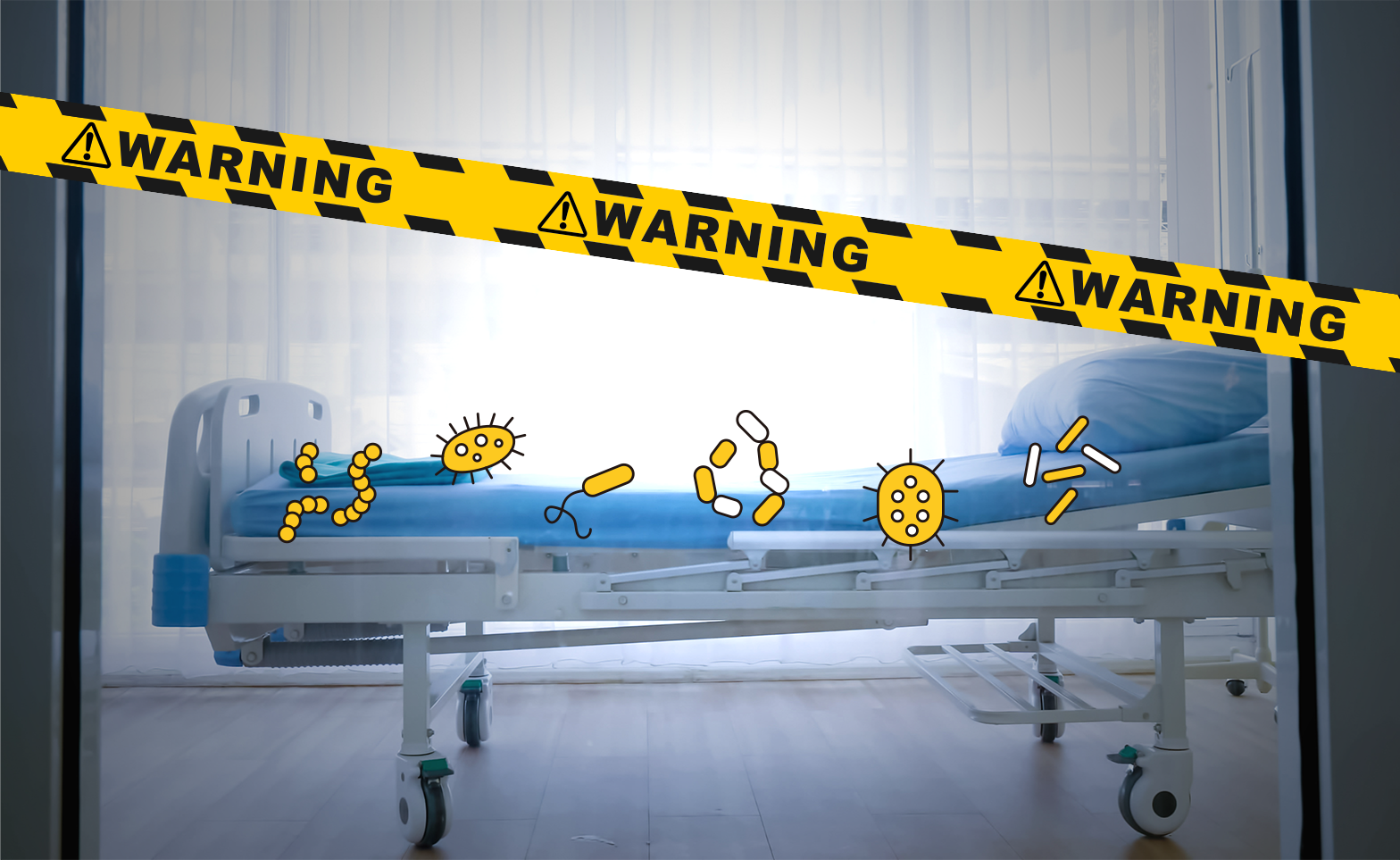A Mattress is an Assembly: Complaints of Fluid-Leaking Patient Mattresses

The ability to clean and disinfect surfaces in hospitals is an issue of utmost importance to public health – but is not often discussed with the public. The Washington State Nurses Association brought it front and center when they filed a complaint with the Washington State Department of Health, claiming “compromised mattresses in hospitals pose a potential biohazard risk to patients” in November 2022. In the complaint, nurses in the Labor and Delivery unit at St. Joseph Medical Center in Tacoma described blood and bodily fluids oozing out of the mattress covers in patients’ beds.
How did this happen? The moisture-resistant mattress cover was no longer moisture-resistant.
This is not a new issue, but it is a widely overlooked issue. Medical devices and products are assemblies of different surface materials. A mattress is no different. The material used on the outside of hospital mattresses is typically claimed to be “non-porous.” If that were the case, however, this issue would not be occurring.
Mattresses and mattress covers are not all made the same way, and they can’t be cleaned the same way. The outer layer of material that is placed on the mattress may be moisture-resistant temporarily. It is important to consider how many times the outer layer of the mattress is cleaned and disinfected in a day and what type of disinfectants are used on them, and to understand if and when degradation may occur.
In 2013, the FDA put out this statement in a safety communication on damaged hospital mattresses:
From January 2011 to January 2013, the FDA received 458 reports associated with medical bed mattress covers failing to prevent blood and body fluids from leaking into the mattress (fluid ingress). Fluid ingress may occur if mattress covers become worn or damaged from small holes or rips in the fabric or from incorrect cleaning, disinfecting and laundering procedures.
Once the moisture-resistant outer layer of the mattress is breached, you are now faced with a sponge comprised of multiple materials absorbing whatever bodily fluids seep through. A reservoir where microbes now find a safe harbor away from biocides used to kill them. There is no way to clean it, let alone disinfect it. Patient safety is put at risk, considering every patient has a bed, and it is the closest surface in contact with the patient while they are being treated.
Learning how to properly disinfect soft surfaces and understand the lifecycle of these products is an issue that the Healthcare Surfaces Institute is trying to address due to the high risk of transmitting microorganisms that can cause infection or illness through items like mattresses and pillows.

Here are some critical questions to ask suppliers when evaluating mattress products for use in hospitals:
- Will I be able to use hospital-grade disinfectants on the mattress cover?
- Have you tested the material against disinfectant usage to determine when the moisture-resistant lining may be breached? It is typical for a manufacturer to request that mattresses be changed out yearly. This does not mean the mattress will remain intact until then.
- Review the IFU with your manufacturer representative.
- Ask the manufacturer if they provide cleaning and disinfection training for not only the mattress but also all components of the bed. It is important to note that cleaning and disinfection are not only done by EVS professionals. Many people clean and disinfect during patient care, so training must include everyone.
To facilitate the discussion with mattress suppliers, healthcare professionals can provide them with the following information:
- What types of disinfectants are being used on mattresses? There is probably a combination of wipes and other products in use.
- How often mattresses are cleaned per day? Manufacturers may be surprised to learn how often mattresses are cleaned in a day, depending on the type of mattress and where it is currently located. ED gurneys are disinfected multiple times a day.
- Provide the infection prevention guidelines for daily and terminal cleaning and disinfecting mattresses.
Before making a purchasing decision, have a conversation about the above and be clear about how soon a surface breach could take place. There will be many patients and healthcare workers touching those mattresses. Safety is the top priority and can only be achieved with a fuller understanding of the surface materials used in these products and how they can be properly disinfected without damage.
As a 501(c)(3) non-profit organization, we rely on donations to save lives. We need your help.
Please consider donating, becoming a member, or exploring corporate sponsorship through your workplace today.

